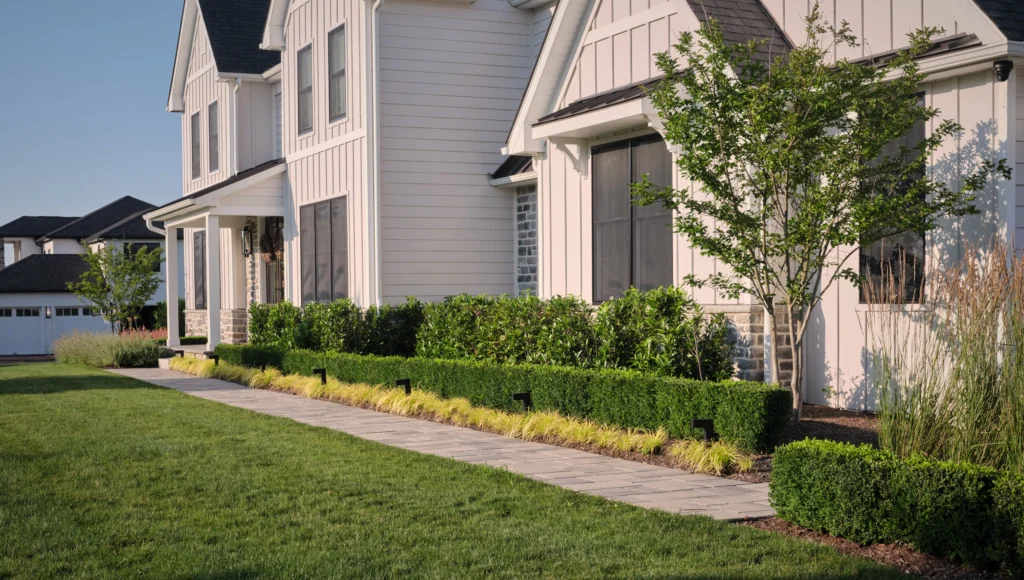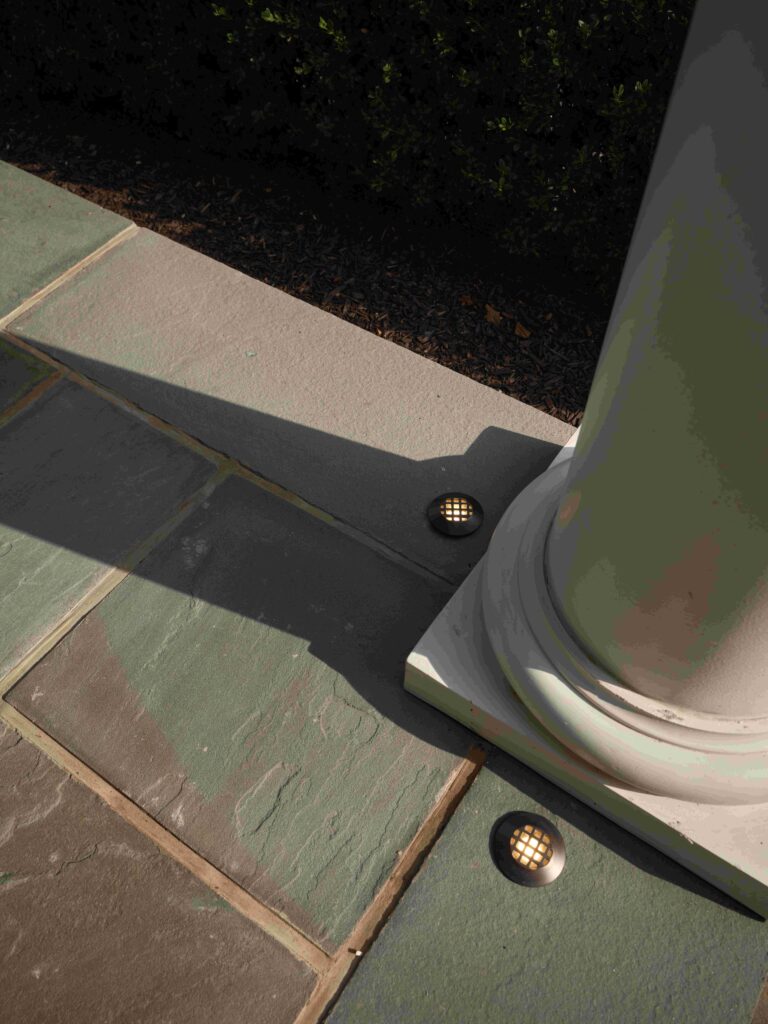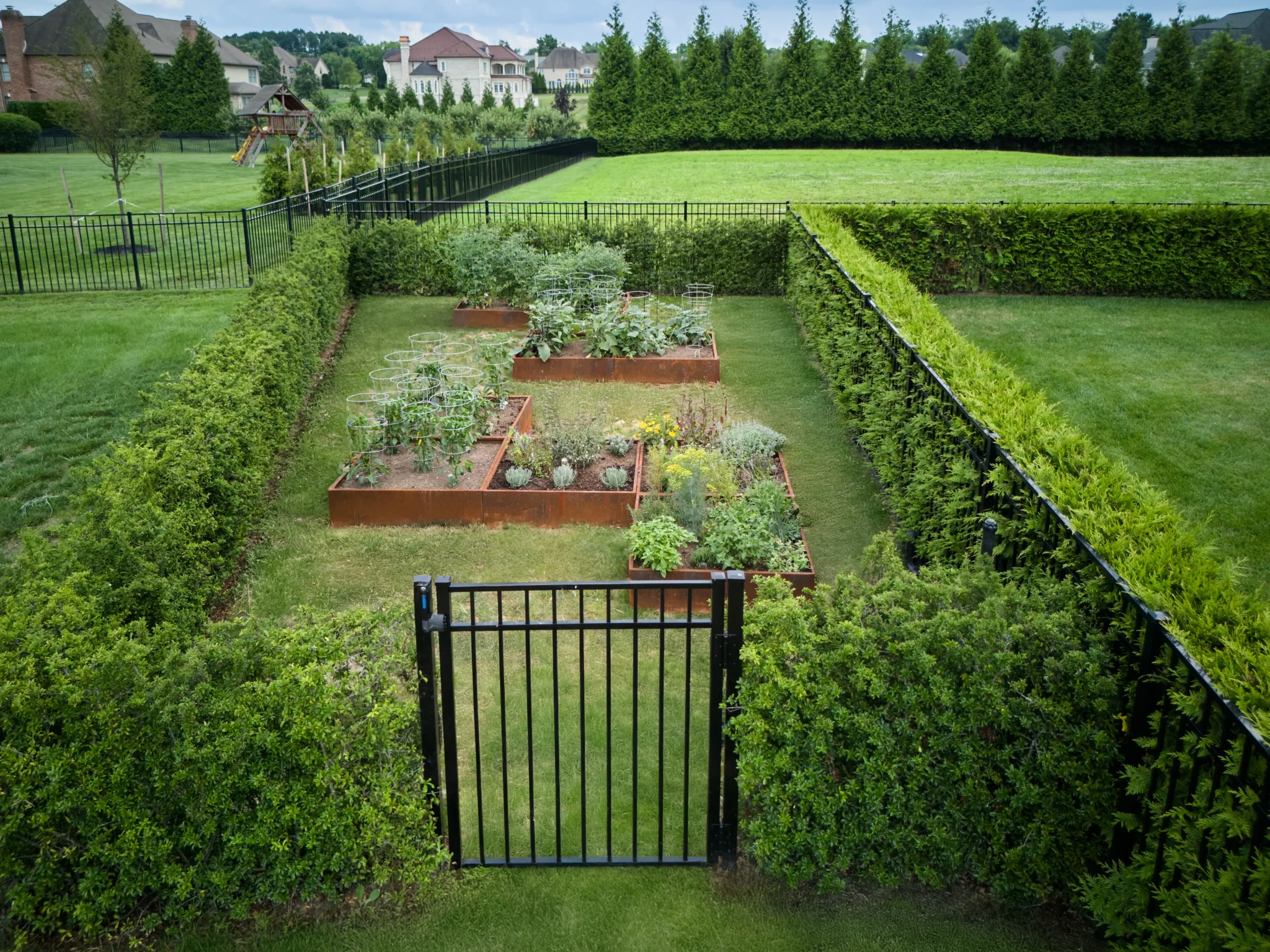For this Aging in Place series, we are proud to be partnering with Ernst Brothers & Builders and Ford3 Architects to provide our clients with a holistic understanding of how to design a home with the purpose of aging in place.
Designing for the Future: How Thoughtful Landscape Design Supports Graceful Aging in Place
In designing a property that supports the graceful aging process, we adhere to three guiding principles: Safety and Accessibility, Timeless Beauty, and Intergenerational Value. Each of these principles plays a pivotal role in ensuring that your landscape not only meets your present needs but also adapts seamlessly to the evolving demands of life. The subject for the first part of this series will be safety and accessibility in landscape and hardscape design, as it pertains to aging in place. Check out Ford3’s article if you’re interested in an architect’s perspective on aging in place, and Ernst Brother’s article for a builder’s perspective.
Safety and Accessibility
A landscape that allows for graceful aging requires careful attention to both vehicular and pedestrian needs evolve. As the aging process often necessitates increased visits from caregivers, family members, and service providers, we prioritize ease of access. One key element is the clear marking of the primary entrance, ensuring that guests—especially those unfamiliar with your property—can effortlessly find their way. A well-positioned portico or pergola enhances visibility, while also providing a sheltered space to prevent snow and ice buildup around the entry, offering a safe, dry area for visitors to remove shoes or wipe off dirt.
As mobility needs evolve, the demands on access to the property may evolve. The most practical solution is a driveway design that allows for easy access directly to the front door, ideally with a circular or courtyard layout that accommodates multiple vehicles. A minimum of 20 feet of clearance at the front door ensures vehicles can park and pass one another with ease. If space permits, a courtyard adjacent to the front entrance provides both aesthetic appeal and functional utility, enabling multiple cars to park within view of the entrance.

Wider walkways and generously sized landings facilitate smooth passage, allowing for side-by-side movement and comfortable entry and exit. To ensure stability, we recommend sturdy welded metal railings—an essential addition to provide both safety and a firm point of support. Landings in the range of 12 feet wide by 7 feet deep, along with main entry walkways and steps measuring 6 to 8 feet in width, allow for ample space for assistance, whether in the form of a caregiver or a companion.

To further enhance safety, we minimize joints in walkways and eliminate tripping hazards. The use of non-slip surfaces, gentle gradients, and the removal of steps ensures that mobility remains unobstructed. We avoid materials like Bluestone in shaded areas, as its tendency to develop slick mildew in low-light conditions can pose a risk, particularly in winter months.

Effective water management is essential to preventing icy pathways. By adjusting the grading and layout near entry points and walkways, we can direct runoff away from high-traffic areas, reducing the risk of dangerous freeze-thaw cycles. Creating a designated area to push snow completely off driveways and pathways ensures a safer environment, so that melting snow does not refreeze and re-enter areas where it can cause daily hazards. Ice melt is effective only down to 22 degrees and is influenced by unpredictable and external factors like wind direction and speed. The most reliable approach is to manage water flow at its source.

Lighting plays a critical role in enhancing both safety and visual comfort. Thoughtfully placed landscape lighting should illuminate paths without producing harsh or glaring light. Light fixtures designed to direct light downward or directionally, rather than exposing the source of light to passersby, prevent temporary visual impairment and guide visitors safely during the evening and early morning hours. Additionally, the system’s controls and maintenance access should be integrated into utility areas, to allow for safe and regular accessibility.

Aging in place is a growing concern and need among our clientele, and we are devoted to continuing to help our clients design their home to last for the ages, as well as providing more information on how aging in place plays out in landscape design. Stay tuned for more installments in our Aging in Place series.
Want to read more about designing a home to be able to age in place? Check out our collaborative partners view on the topic:




